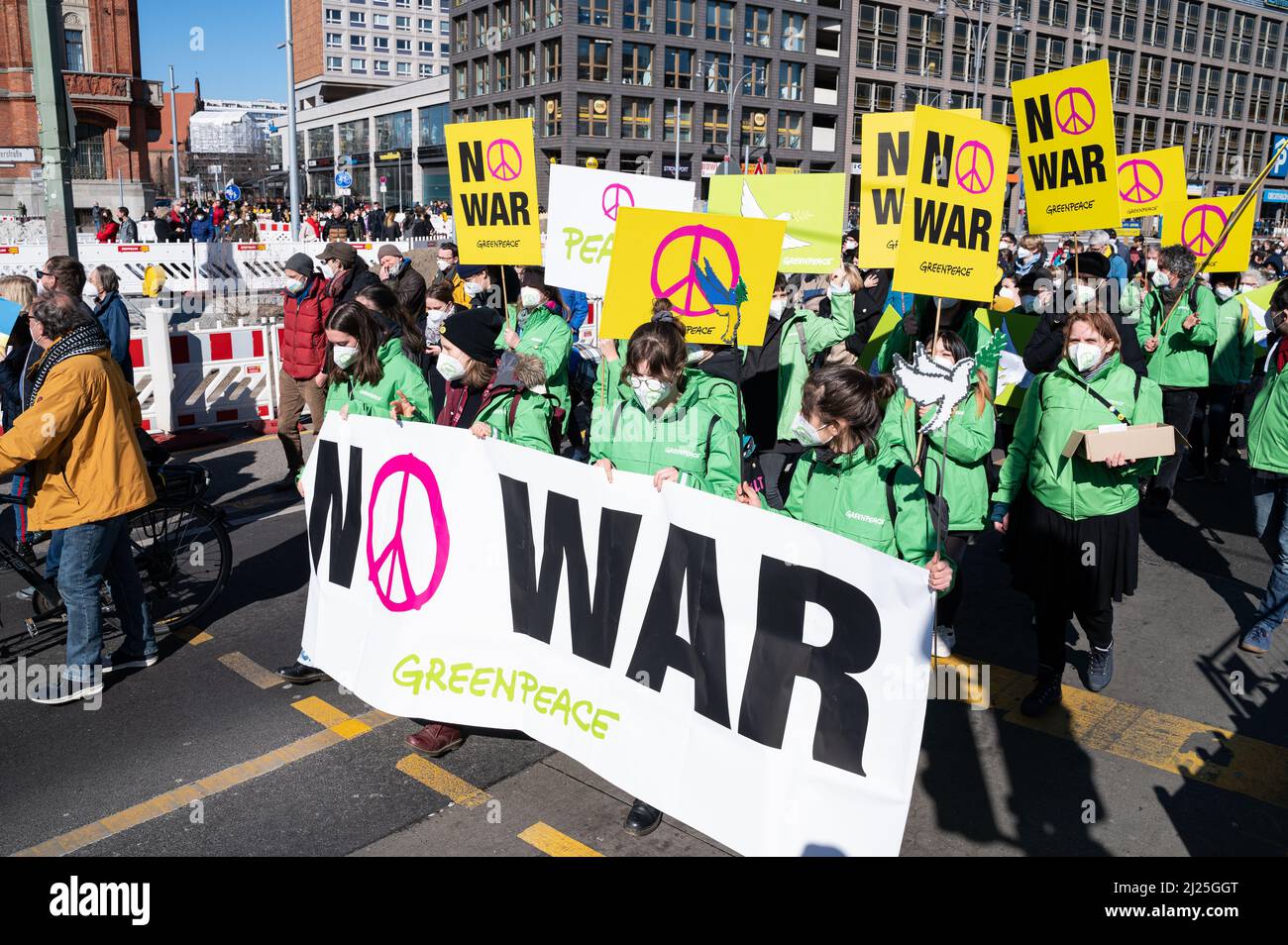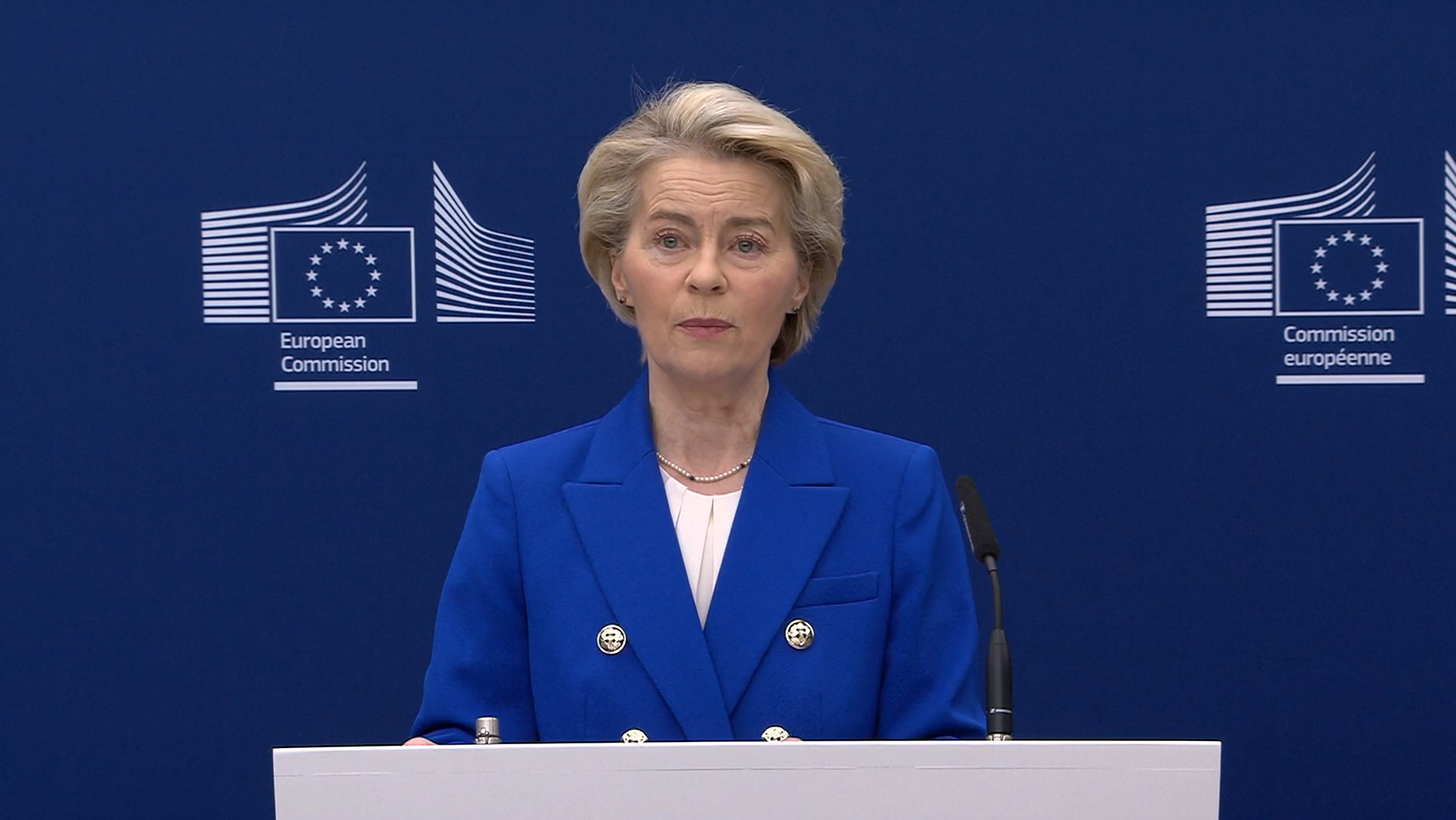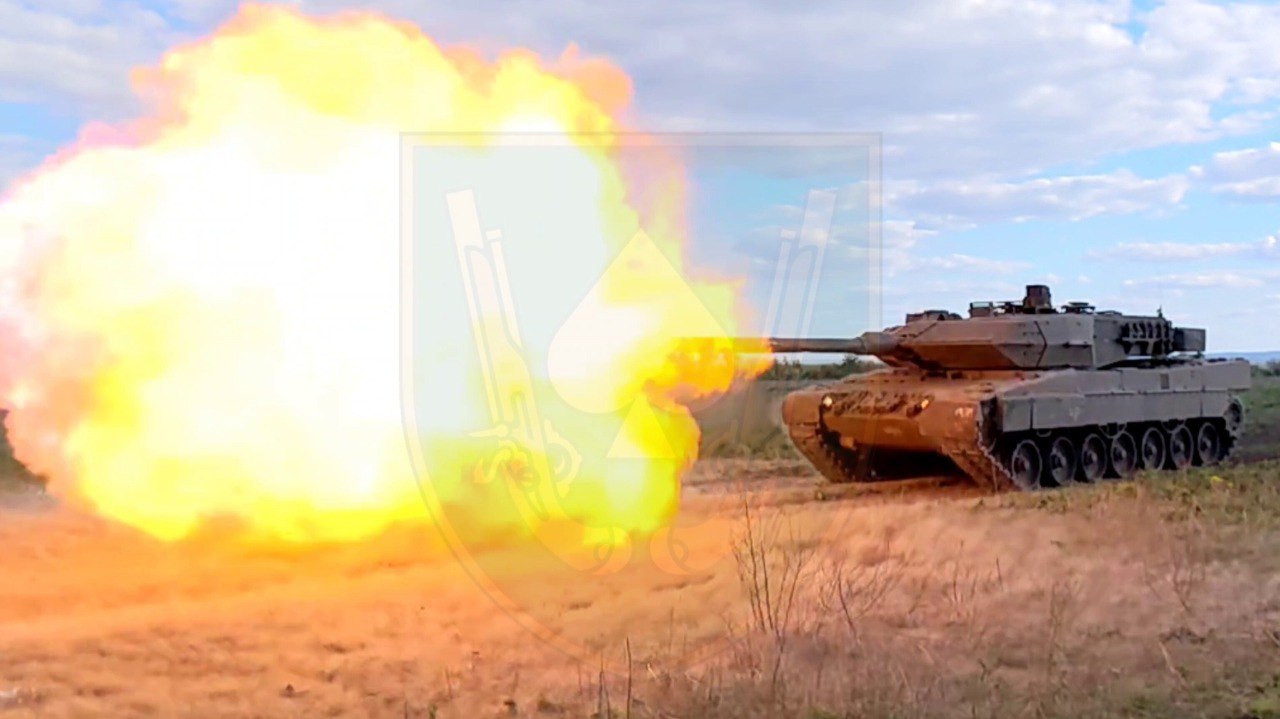
German Political Upheaval Signals Deeper Cracks Amid Economic Strain and War's Shadow
German Political Upheaval Signals Deeper Cracks Amid Economic Strain and War's Shadow
Germany's new federal parliament, the Bundestag, convened Tuesday, March 25, 2025, marking the formal end of Chancellor Olaf Scholz's government but ushering in a period of profound uncertainty. As Scholz and his cabinet received their dismissal papers from President Frank-Walter Steinmeier on Tuesday afternoon, March 26, 2025, remaining as caretakers, negotiations commenced between the election's front-runner, the center-right CDU/CSU bloc, and Scholz's Social Democrats (SPD) to forge a new ruling coalition, highlighting a nation grappling with economic malaise, deep political fissures, and the far-reaching consequences of the war in Ukraine.
The inauguration of the 21st Bundestag, presided over by newly elected Speaker Julia Klöckner of the Christian Democratic Union (CDU), follows elections on February 23, 2025, where the CDU/CSU bloc emerged as the largest parliamentary group with 28.5% of the votes, while the Alternative for Germany (AfD) secured 20.8%, pushing the SPD into third place. This transition, however, is far from a routine changing of the guard. It's the culmination of years of mounting pressure from a slowing global economy—with German GDP expected to expand by only 0.2-0.4% in 2025—and the destabilizing effects of the conflict in Ukraine, which have slowly but significantly reshaped Germany's political landscape.
German federal elections determine the composition of the Bundestag, Germany's parliament. Since a single party rarely achieves a majority, coalition governments are formed through negotiations between multiple parties, which then typically elect the Chancellor in the Bundestag.
The Anatomy of a Coalition Collapse
The immediate trigger for the current political scramble was the disintegration last year of Scholz's "traffic light" coalition, comprised of his SPD, the Greens, and the Free Democratic Party (FDP). The final straw came in November with the ousting (or resignation) of Finance Minister Christian Lindner, the leader of the FDP.
Lindner's departure wasn't merely a personality clash; it symbolized an irreconcilable rift within the coalition over fundamental budget and economic policies. The FDP, representing a base largely composed of center-right economic liberals advocating for free markets, tax cuts, deregulation, and reduced state intervention, found itself increasingly at odds with the more statist, welfare-oriented approaches favored by the SPD and the Greens.
Overview of German Political Parties' Positions on Economic and Social Policies
| Party | Economic Policy Stance | Social Policy Stance |
|---|---|---|
| CDU/CSU | Center-right; Fiscal discipline, corporate tax cuts, deregulation, reduced energy costs. Promotes economic competitiveness. | Center-right/Conservative; Stricter immigration rules, traditional values. |
| SPD | Center-left; Public investment, higher minimum wage (€15), wealth tax, lower VAT on food. Proposes a "Germany Fund". | Center-left; Social justice, workers' rights, moderate immigration policies. |
| FDP | Center/Center-right; Tax cuts, deregulation, reduced bureaucracy, digital economy reforms. | Center (Social Liberalism); Civil liberties, stricter immigration rules. |
| Greens | Center-left; Sustainable economy, green investments, climate action, social spending. | Center-left (Progressive); Environmental protection, social equality, moderate immigration. |
| AfD | Right-wing/Nationalist; Lower taxes, reduced state intervention, EU skepticism. | Right-wing/Nationalist-Conservative; Restrictive immigration, traditional values. |
| Die Linke | Left-wing; Public investment, higher minimum wage (€15), wealth redistribution, rent caps. Opposes debt brake. | Left-wing (Progressive); Social justice, anti-discrimination, open immigration policies. |
At its core, the dispute was about money – or the lack thereof. Years of sluggish economic performance left Germany's public finances strained, marked by high deficits and mounting debt. "Essentially, the government ran out of money while owing a substantial amount," observed one economic analyst. This fiscal pressure magnified the ideological differences, making compromise impossible. The FDP, analysts suggest, faced a choice: adhere to its coalition partners' policies and betray its voter base, or force a break – ultimately choosing the latter to maintain its political identity.
Voter Discontent and the Shifting Sands of Policy
The FDP's base, typically drawn from the upper-middle class and successful small business owners, prioritizes economic efficiency and individual liberty over expanding social welfare programs. Their demands for smaller government, lower taxes, and reduced state intervention echo sentiments found among segments of the Republican base in the United States. They perceive extensive social spending, funded by taxes, as a wealth transfer they would rather avoid, preferring tax relief instead.
Conversely, parties like the SPD traditionally draw support from working-class and lower-middle-class voters who often rely more heavily on social safety nets, leading to policies favoring welfare expansion.
This tension became acute in the context of the Ukraine war. Significant German aid to Ukraine, whether direct financial support or military equipment provision, comes primarily from government revenues – ultimately, taxpayer money. Many within Germany's middle class, unlike large corporations or defense contractors, see little direct benefit from foreign wars or extensive aid packages. Instead, they experience the downsides: higher taxes and inflation eroding their savings and purchasing power. This fuels growing anti-war sentiment and opposition to substantial foreign aid commitments, contributing significantly to the political volatility seen in Germany.
"The middle class feels squeezed," noted a sociologist studying European social trends. "They don't see direct gains from geopolitical conflicts like the defense industry or major financiers might, but they acutely feel the pinch of inflation and tax burdens associated with supporting them."
The Specter of Waning Support for Ukraine
Given this domestic backdrop, the expectation that Germany can indefinitely sustain, let alone increase, its substantial support for Ukraine while maintaining internal political stability appears increasingly challenging. This reality existed even under the Biden administration in the US, historically Kyiv's staunchest backer.
Now, with the potential prospect of a US administration less committed to NATO and eager to disengage from the Ukraine conflict, the pressure on Germany and other European nations intensifies dramatically. Should the US reduce its role, maintaining the current level of support for Ukraine would demand far greater sacrifices from Europe. Some US figures have even suggested European nations should increase their military aid contributions from around 2% towards 5% of GDP. Analysts warn that such a move by Germany could significantly boost support for parties like the Alternative for Germany (AfD), which traditionally opposes high foreign spending and intervention.
This dynamic isn't unique to Germany; similar trends, varying in intensity and form, are observable across Europe.

Europe's Scramble to Rearm
Faced with the unsettling possibility of American disengagement, European leaders are urgently focusing on bolstering the continent's own defense capabilities. European Commission President Ursula von der Leyen recently framed European rearmament not as a distant vision or plan, but as an immediate, actionable necessity.

Reflecting this urgency, an EU summit on March 6th approved a significant European defense strategy, often dubbed the "€800 billion plan to revitalize Europe." A key initial component involves mobilizing €150 billion to enhance member states' military capacities.
This substantial sum will be sourced through several channels:
- EU Bond Issuance: The largest portion will come from issuing joint EU bonds. Leveraging the EU's collective AAA credit rating allows borrowing at lower interest rates than most individual member states could achieve. This mechanism, supported by provisions like Article 122 of the Lisbon Treaty for emergency situations, will likely feature a mix of maturities, potentially emphasizing longer-term bonds (e.g., 30 years) following successful pandemic-era issuance. Early indications suggest competitive rates; a 10-year EU bond issued in March carried a 2.89% coupon, significantly lower than, for example, Italy's concurrent 4% rate on its sovereign debt.
- National Budget Increases: Member states will be permitted to increase their own defense spending allocations.
- EU Funds: Existing EU resources may be utilized.
- Pension Fund Collateral: Controversially, leveraging national pension and social security funds as collateral for loans is also under consideration.
Article 122 of the Treaty on the Functioning of the European Union (TFEU), often associated with the Lisbon Treaty, provides a legal basis for the EU Council to grant financial assistance to a Member State experiencing severe difficulties due to exceptional circumstances beyond its control, such as natural disasters. This article enables the EU to establish emergency funding mechanisms to address urgent crises affecting member states.
Did you know that recent bond yield trends in the EU highlight interesting dynamics? As of early 2025, the EU's short-term government bond yields (2-year) were around 2.23%, reflecting ongoing economic conditions. Meanwhile, the spread between Italian and German 10-year bond yields was approximately 1.14%, down from 1.32% a year ago, indicating a slight convergence in perceived risk between these two major European economies. This spread suggests that Italian bonds are yielding more than German bonds, reflecting differences in credit risk perception. Overall, these trends provide insights into the Eurozone's economic landscape and investor sentiment regarding different member states' creditworthiness.
Major buyers for these EU bonds are expected to include national central banks (like the Bundesbank and Banque de France), large institutional investors (such as the Abu Dhabi Investment Authority), and significantly, major European pension funds (e.g., Netherlands' ABP, Germany's Allianz).
The funds raised via these bonds will flow into a dedicated European Defence Fund managed by the European Investment Bank (EIB). The EIB will then disburse these funds as loans to member states pursuing approved defense projects. This centralized EU approach, while seemingly circuitous, aims primarily at minimizing borrowing costs.
However, accessing these loans comes with conditions designed to ensure coordinated rearmament:
- Strategic Allocation: Countries must commit funds to projects aligned with an EU-defined defense capability map, potentially requiring significant investment (e.g., 60% of the loan) in critical areas like cyber warfare capabilities, a known European shortfall.
- Intra-EU Procurement: Preference must be given to procuring weapons systems developed collaboratively among EU member states.
To put €150 billion in perspective, it roughly equates to the combined annual defense budgets of Germany, France, and the UK, or about three years of spending for France or the UK individually based on recent figures (2022-2024). It's also comparable to the EU's total aid to Ukraine over the past three years (€140 billion, split between military and economic support). The funds are earmarked for purchasing munitions, missiles, artillery, drones, counter-drone systems, and investing in defense-related infrastructure, including cyber, AI, and electronic warfare capabilities.
The War Dividend: Defense Industry Booms
The surge in defense spending, driven by the Ukraine war and now the European rearmament push, has created a bonanza for defense contractors. Germany's largest arms manufacturer, Rheinmetall, provides a stark example.
Key Financial Performance Indicators for Rheinmetall AG (Fiscal Year 2024)
| Indicator | Value |
|---|---|
| Operating Result | €1,478 million |
| Operating Margin | 15.2% |
| Defence Business Margin | 19% |
| Earnings per Share (EPS) | €16.51 |
| Proposed Dividend per Share | €8.10 |
| Operating Cash Flow | €1,045 million |
| Price-to-Earnings (P/E) Ratio | 79.32 |
| Price to Sales Ratio | 7.29 |
| Price to Book Ratio | 33.74 |
Comparing the first three quarters of 2024 with the same period in 2023 reveals dramatic growth for Rheinmetall:
- Sales Revenue: Jumped 35.73% to €6.27 billion from €4.62 billion.
- Taxable Income: Increased 26.97% to €306 million from €241 million.
- Cash Flow from Investing Activities: Soared 76.92% to €416 million from €234 million.
This surge is fueled by massive government orders. A prime example involves the Leopard 2 main battle tank, a cornerstone of many European armies and produced partly by Rheinmetall. Numerous European nations have supplied these tanks to Ukraine. In 2023, Germany, Norway, Poland, Portugal, Spain, and Finland collectively sent 113 Leopard 2s. Further contributions followed in 2024, and Germany plans additional deliveries this year.

These tanks are critical assets for units like Ukraine's 155th Mechanized Brigade, which received 31 Leopard 2s and has been heavily engaged in fierce fighting around Pokrovsk in the Donetsk region since last December – currently one of the most intense frontlines.

The money flowing from governments like Germany to contractors like Rheinmetall serves a dual purpose: it supplies equipment sustaining the brutal conflict on the frontlines, while simultaneously enriching the coffers of the defense industry and its stakeholders.
Rheinmetall's ownership structure reveals where these profits ultimately land:
- Institutional Investors (66%): Dominated by North American firms (42%), followed by European (21%) and other global investors (3%).
- Private Investors (34%).
A major shareholder is BlackRock, the US-based multinational investment giant. Funds invested by BlackRock in Rheinmetall originate from its own diverse pool of investors, channeling war-related profits back to them.
These profits benefit BlackRock's leadership, including CEO Laurence Fink and CFO Martin Small, among others.

Furthermore, entities investing in BlackRock also indirectly profit from Rheinmetall's success. Major BlackRock shareholders include prominent US firms like The Vanguard Group, alongside international players like Singapore's Temasek Holdings. Consequently, executives associated with these firms, such as former Vanguard Chairman Mortimer Buckley and current CEO Salim Ramji, are positioned to gain financially from the escalating defense spending spurred by the conflict.
Forging a New Government: Policy Shifts and Political Realities
Negotiations are now focused on forming a "Grand Coalition" between the CDU/CSU and the SPD, potentially led by CDU leader Friedrich Merz as Chancellor. The policy platform emerging from the CDU/CSU camp signals significant shifts:

A Rightward Tilt on Immigration
A core plank is stricter immigration control. Merz has vowed to tighten limits, enforce deportations (especially for Syrian and Afghan refugees), and repeal the previous government's 2024 policy that expedited citizenship after 3-5 years of residency. The CSU advocates linking asylum claims to applicants' economic self-sufficiency to reduce fiscal burdens, considering indefinite detention for criminal or "high-risk" migrants who cannot be repatriated, and strengthening border controls. However, Merz also supports faster visa processing for needed foreign skilled workers.
Economic Overhaul Plans
Economically, the CDU/CSU proposes tax relief (income tax, social insurance contributions, VAT in catering) and tax exemption for overtime pay. Concurrently, Merz aims to eliminate unemployment benefits for those deemed capable but unwilling to work – a group he estimates at 1.7 million people. Pension policy changes include abolishing income tax declarations for retirees. A novel proposal involves state-funded capital market investment accounts for all children aged 6-18 to foster long-term wealth and potentially boost birth rates. Critically, Merz strongly opposes the Green party's nuclear phase-out, arguing Germany should deprioritize climate change and carbon neutrality goals.
Paradoxically, while Merz and the CDU/CSU express dislike for Donald Trump (a sentiment shared across most of the German political spectrum except the far-right AfD), their proposed economic and immigration policies bear striking resemblances to Trump's platform.
Navigating Foreign Policy
On the international stage, the proposed stance is pro-Ukraine, anti-China, anti-Trump, pro-France, and pro-Europe. Given the significant electoral losses suffered by the SPD and Greens, partly attributed to their perceived lack of focus on controlling illegal immigration, the powerful Interior Ministry is likely to fall under CDU/CSU control, making stricter immigration policies probable if the coalition forms.
An Uncertain Future: Stability, Influence, and Europe's Path
Despite the potential for a new government, significant hurdles remain. Germany's political landscape is highly fragmented, with parties increasingly moving towards ideological extremes rather than the pragmatic center ground of the past. The CDU/CSU's refusal to consider a coalition with the AfD, despite some policy overlaps, forces them into a potentially uncomfortable alliance with the SPD, where major disagreements persist on budget, taxation, and social issues.
"If Merz makes substantial concessions to the SPD simply to form a government, he risks abandoning the core promises made to his own voters," commented a political analyst in Berlin. "Such a 'coalition of inconvenience' might prove unstable, acting merely as a transitional government and inadvertently paving the way for other parties in future regional elections."
The absence of a unifying figure like former Chancellor Angela Merkel is palpable. Many commentators argue that Merkel's pragmatic, consensus-driven leadership provided stability that Germany, and Europe, sorely miss. Her departure, some believe, marked the beginning of Germany's decline from Europe's undisputed leader to a more marginal player. "Germany squandered Merkel's political legacy in just three years," lamented one former diplomat. "Europe now lacks a strong, credible continental leader; figures like Macron offer more volatility than vision."

The current political climate in Europe seems unlikely to produce the kind of transformative leadership needed to navigate these challenges. Europe's core vulnerability, according to some critical voices, remains its deep-seated dependence on the United States – a relationship the US itself appears to be reassessing. Without a fundamental shift, Europe's decline seems probable.
As Germany navigates this complex transition, the success of the next government hinges on bridging deep ideological divides internally while confronting immense external pressures. The ability of a potential CDU/CSU-SPD coalition to overcome the "many cooks spoiling the broth" syndrome that plagued the previous government remains uncertain. In a world tilting towards multipolarity, and amid a pervasive rightward shift driven by economic anxiety, the path forward for Germany, and indeed for Europe, looks increasingly fraught. Whether the continent can find a way to assert its own interests, perhaps through internal realignment as some suggest, or faces relegation to a passive role on the global stage, remains the critical question.